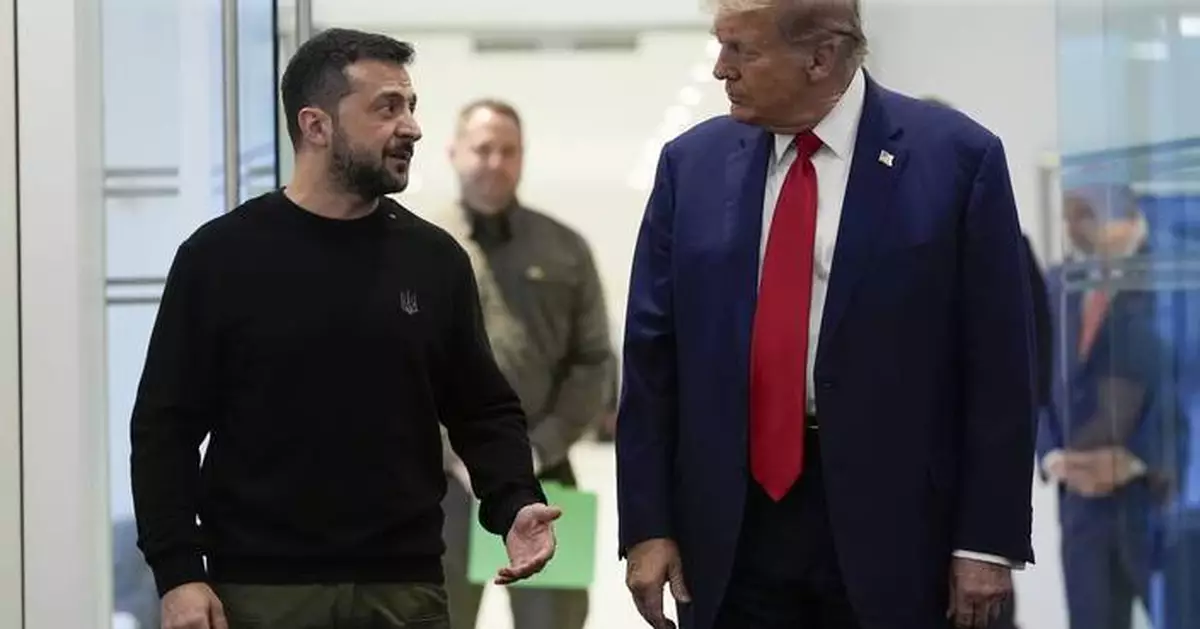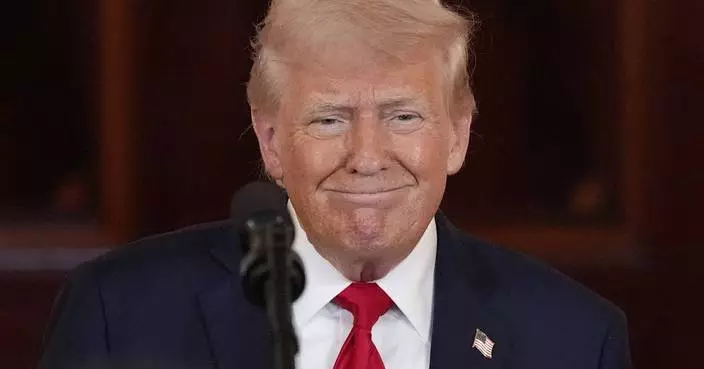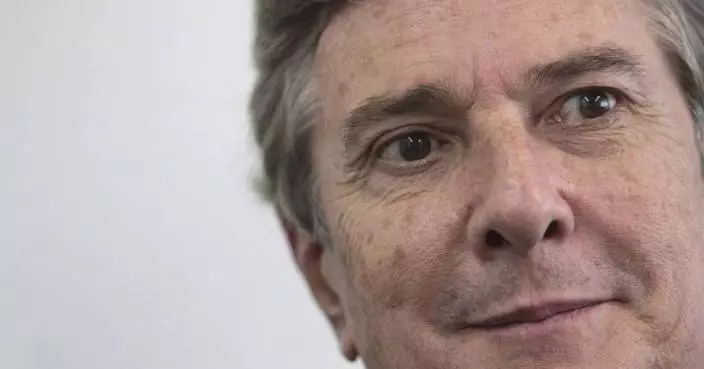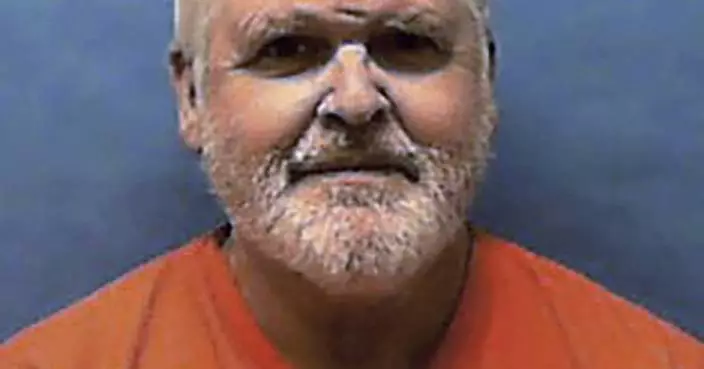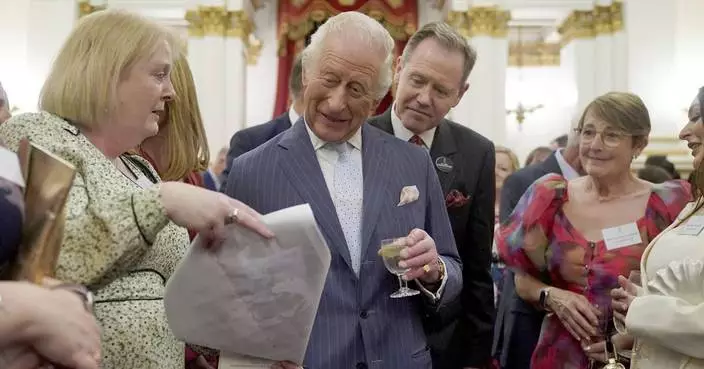KYIV, Ukraine (AP) — Negotiations between U.S. and Ukrainian officials over continued American military aid in exchange for access to Ukraine’s valuable mineral resources are gaining traction after a rocky start, something Kyiv hopes will help secure long-term support for its defense against Russia.
Ukraine has offered to strike a deal with President Donald Trump which would supply the U.S. with rare earth elements — critical for various technologies. Trump said that he wanted such a deal earlier this month, and it was initially proposed last fall by Ukrainian President Volodymyr Zelenskyy as part of his plan to strengthen Kyiv’s hand in future negotiations with Moscow.
But Kyiv balked at initial U.S. offers, arguing they didn't contain adequate security assurances for Ukraine and that the proposed price tag of $500 billion would saddle generations of Ukrainians with debt.
But signs from both sides suggest the gap may be closing, and a deal could be on the horizon.
Here is a look at Ukraine’s rare earth industry and how a deal might come together:
Rare earth elements are a set of 17 elements that are essential to many kinds of consumer technology, including cellphones, hard drives and electric and hybrid vehicles.
It's unclear if Trump is seeking specific elements in Ukraine, which also has other minerals to offer.
“It can be lithium. It can be titanium, uranium, many others,” Yermak said. “It’s a lot.”
China, Trump’s chief geopolitical adversary, is the world’s largest producer of rare earth elements. Both the U.S and Europe have sought to reduce their dependence on Beijing.
For Ukraine, such a deal would ensure that its biggest and most consequential ally doesn't freeze military support. That would be devastating for the country, which has been at war for nearly three years after Russia's full-scale invasion on Feb. 24, 2022.
The idea also comes at a time when reliable and uninterrupted access to critical minerals is increasingly hard to come by globally.
Ukraine’s rare earth elements are largely untapped because of the war and because of state policies regulating the mineral industry. The country also lacks good information to guide the development of rare earth mining.
Geological data is thin because mineral reserves are scattered across Ukraine, and existing studies are considered largely inadequate. The industry's true potential is clouded by insufficient research, according to businessmen and analysts.
In general, the outlook for Ukrainian natural resources is promising. The country's reserves of titanium, a key component for the aerospace, medical and automotive industries, are believed to be among Europe’s largest. Ukraine also holds some of Europe’s largest known reserves of lithium, which is required to produce batteries, ceramics and glass.
In 2021, the Ukrainian mineral industry accounted for 6.1% of the country’s gross domestic product and 30% of exports.
An estimated 40% of Ukraine's metallic mineral resources are inaccessible because of Russian occupation, according to data from We Build Ukraine, a Kyiv-based think tank. Ukraine has argued that it's in Trump’s interest to develop the remainder before Russian advances capture more.
The European Commission, the executive branch of the European Union, identified Ukraine as a potential supplier for more than 20 critical raw materials and concluded that if the country joins the 27-nation EU, it could strengthen the European economy.
Negotiations over a mineral deal between U.S. and Ukrainian officials have deepened in recent days as Kyiv has resisted initial proposals over their lack of specific assurances for Ukraine's security.
Trump administration officials have pressured Zelenskyy to accept a deal where Ukraine would divert $500 billion in profits from exploited minerals to Washington as compensation for its wartime support.
But Zelenskyy has rejected the offer, saying that while Kyiv welcomes partnering with the U.S. on minerals, he would not sign off on an agreement "that will be paid off by ten generations of Ukrainians.”
In a sign that negotiations on a deal were moving forward, Zelenskyy on Sunday told a forum in Kyiv marking the three-year anniversary of Russia's invasion that the U.S.' request for $500 billion had been taken “off the table.”
Trump’s special envoy to the Middle East, Steve Witkoff, said on CNN’s “State of the Union” the same day that he expects a deal allowing the U.S. to play a greater role in exploiting Ukraine’s mineral resources to be reached this week.
While U.S. companies have expressed interest in partnering with Ukraine on minerals, striking a formal deal will likely require new legislation, geological surveys and deeper negotiations on specific terms.
It's unclear what kind of security guarantees companies would require to risk working in Ukraine, even in the event of a ceasefire. And no one knows for sure what kind of financing agreements would underpin contracts between Ukraine and U.S companies.
Susie Blann and Associated Press writers Michelle L. Price in Washington and Justin Spike in Kyiv contributed to this report.

FILE - Ukrainian soldiers of the Da Vinci Wolves Battalion train not far from the front line in the Pokrovsk area of the Donetsk region, Ukraine, Jan. 29, 2025. (AP Photo/Evgeniy Maloletka, File)

FILE - In this photo provided by Ukraine's 24th Mechanized Brigade press service, a soldier prepares to fire a howitzer towards Russian positions on the front line near Chasiv Yar, Donetsk region, Ukraine, Friday, Feb. 7, 2025. (Oleg Petrasiuk/Ukraine's 24th Mechanized Brigade via AP, File)

FILE - Ukrainian servicemen of 24th Mechanized Brigade train not far from the front line in the Donetsk region, Ukraine, Jan. 21, 2025. (AP Photo/Evgeniy Maloletka, File)
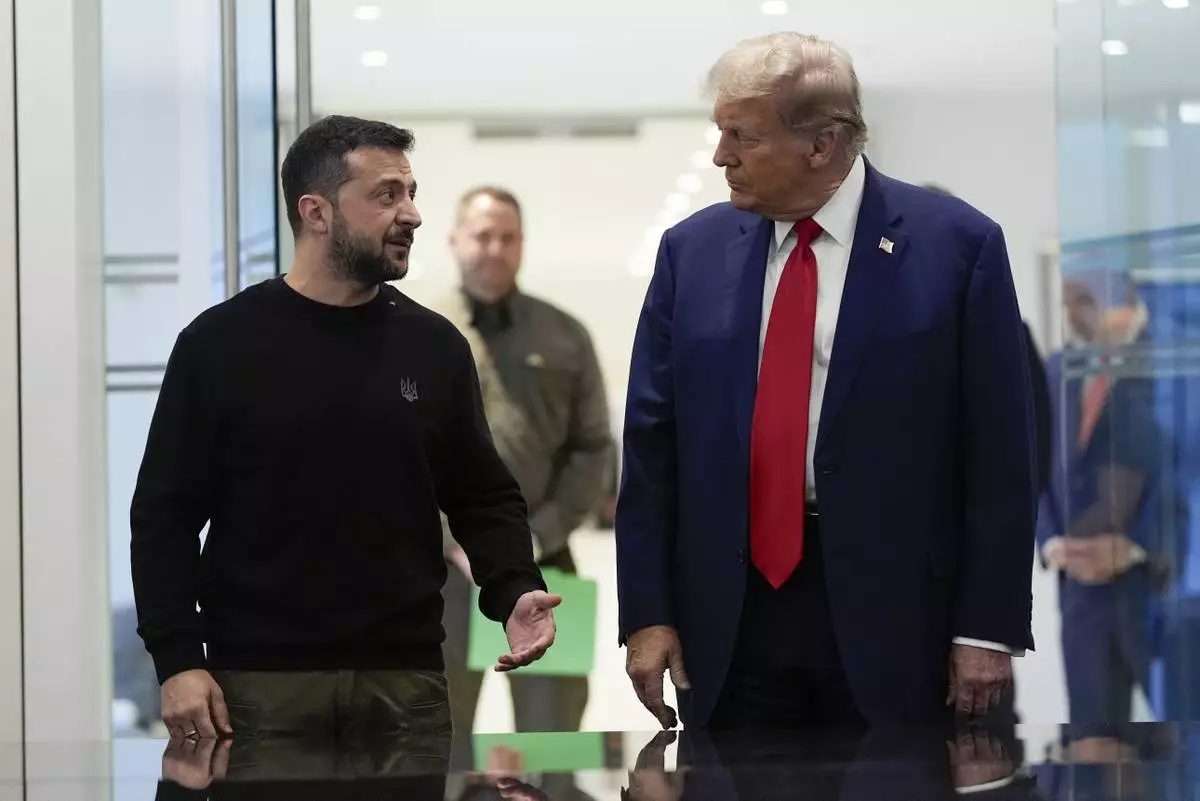
FILE - President Donald Trump meets with Ukraine's President Volodymyr Zelenskyy at Trump Tower, Sept. 27, 2024, in New York. (AP Photo/Julia Demaree Nikhinson, File)
President Donald Trump’s administration released a lengthy review of transgender health care on Thursday that advocates for a greater reliance on behavioral therapy rather than broad gender-affirming medical care for youths with gender dysphoria.
The 409-page Health and Human Services report questions standards for the treatment of transgender youth issued by the World Professional Association for Transgender Health and is likely to be used to bolster the government’s abrupt shift in how to care for a subset of the population that has become a political lightning rod.
Major medical groups and those who treat transgender young people sharply criticized the new report as inaccurate.
This “best practices” report is in response to an executive order Trump issued days into his second term that says the federal government must not support gender transitions for anyone under age 19.
“Our duty is to protect our nation’s children — not expose them to unproven and irreversible medical interventions,” National Institutes of Health Director Dr. Jay Bhattacharya said in a statement. “We must follow the gold standard of science, not activist agendas.”
The report questions the ethics of medical interventions for transgender young people, suggesting that adolescents are too young to give consent to life-changing treatments that could result in future infertility. It also cites and echoes a report in England that reinforced a decision by its public health services to stop prescribing puberty blockers outside of research settings.
The report accuses transgender care specialists of disregarding psychotherapy that might challenge preconceptions, partly because of a “mischaracterization of such approaches as ‘conversion therapy,’” a discredited practice that seeks to change patients’ sexual orientation or gender identification. About half the states have banned for conversion therapy for minors.
The American Academy of Child & Adolescent Psychiatry has said evidence shows conversion therapies inflict harm on young people, including elevated rates of suicidal thoughts.
HHS said its report does not address treatment for adults, is not clinical guidance and does not make any policy recommendations. However, it also says the review “is intended for policymakers, clinicians, therapists, medical organizations, and importantly, patients and their families,” and it declares that medical professionals involved in transgender care have failed their young patients.
The report could create fear for families seeking care and for medical providers, said Shannon Minter, the legal director at the National Center for Lesbian Rights. “It’s very chilling to see the federal government injecting politics and ideology into medical science,” Minter said.
“It’s Orwellian. It is designed to confuse and disorient,” Minter added.
Child and adolescent psychiatrist Dr. Scott Leibowitz, a co-author of the influential WPATH standards for youth, said the new report “legitimizes the harmful idea that providers should approach young people with the notion that alignment between sex and gender is preferred, instead of approaching the treatment frame in a neutral manner.”
While Health Secretary Robert F. Kennedy Jr. has repeatedly pledged to practice “radical transparency,” his department did not release any information about who authored the document. The administration says the new report will go through a peer-review process and will only say who contributed to the report after “in order to help maintain the integrity of this process.”
The report contradicts American Medical Association guidance, which urges states not to ban gender-affirming care for minors, saying that “empirical evidence has demonstrated that trans and non-binary gender identities are normal variations of human identity and expression.”
It also was prepared without input from the American Academy of Pediatrics, according to its president, Dr. Susan Kressly.
“This report misrepresents the current medical consensus and fails to reflect the realities of pediatric care,” Kressly said. She said the AAP was not consulted “yet our policy and intentions behind our recommendations were cited throughout in inaccurate and misleading ways.”
Dr. Jack Drescher, a New York psychiatrist and psychoanalyst who works on sexual orientation and gender identity issues, said the report is one-sided and “magnifies the risks of treatments while minimizing benefits.”
The Trump administration’s report says “many” U.S. adolescents who are transgender or are questioning their gender identity have received surgeries or medications. In fact, such treatments remain rare as a portion of the population. Fewer than 1 in 1,000 adolescents in the U.S. received gender-affirming medication — puberty blockers or hormones — according to a five-year study of those on commercial insurance released this year. About 1,200 patients underwent gender-affirming surgeries in one recent year, according to another study.
Gender-affirming care for transgender youth under standards widely used in the U.S. includes developing a plan with medical experts and family members that includes supportive talk therapy and can — but does not always — involve puberty blockers or hormone treatment. Many U.S. adolescents with gender dysphoria may decide not to proceed with medications or surgeries.
Jamie Bruesehoff, a New Jersey mom, said her 18-year-old daughter, who was assigned male at birth, identified with girls as soon as she could talk. She began using a female name and pronouns at 8 and received puberty blockers at 11 before eventually beginning estrogen therapy.
“She is thriving by every definition of the word,” said Bruesehoff, who wrote a book on parenting gender-diverse children. “All of that is because she had access to this support from her family and community and access to evidence-based gender-affirming health care when it was appropriate.”
A judge has blocked key parts of Trump’s order, which includes denying research and educational grants for medical schools, hospitals and other institutions that provide gender-affirming care to people 18 or younger. Several hospitals around the country ceased providing care. The White House said Monday that since Trump took office, HHS has eliminated 215 grants totaling $477 million for research or education on gender-affirming treatment.
Most Republican-controlled states have also adopted bans or restrictions on gender-affirming care. A U.S. Supreme Court ruling is pending after justices heard arguments in December in a case about whether states can enforce such laws.
The Jan. 28 executive order is among several administration policies aimed at denying the existence of transgender people. Trump also has ordered the government to identify people as either male or female rather than accept a concept of gender in which people fall along a spectrum, remove transgender service members from the military, and bar transgender women and girls from sports competitions that align with their gender. This month, HHS issued guidance to protect whistleblowers who report doctors or hospitals providing gender-affirming care. Judges are blocking enforcement of several of the policies.
This latest HHS report, which Trump called for while campaigning last year, represents a reversal in federal policy. The U.S. Substance Abuse and Mental Health Services Administration, which is part of HHS, found that no research had determined that behavioral health interventions could change someone’s gender identity or sexual orientation. The 2023 update to the 2015 finding is no longer on the agency’s website.
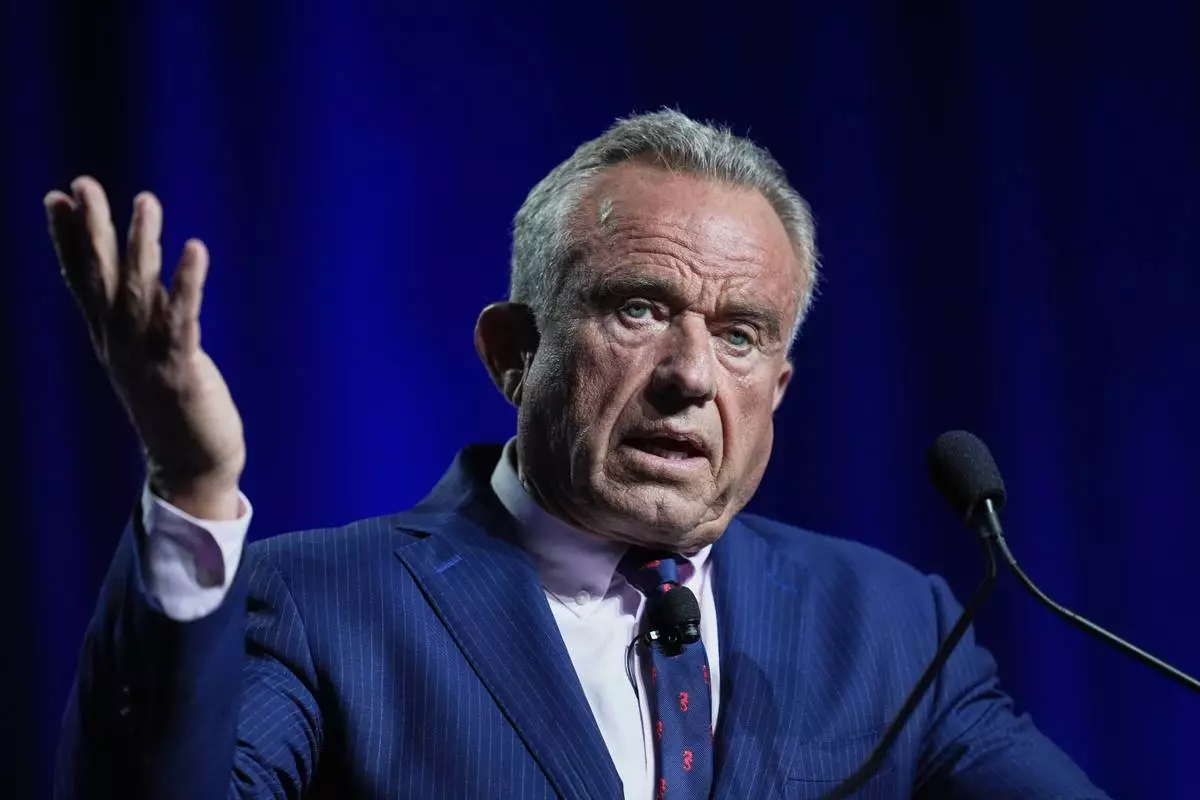
FILE - Health and Human Services Secretary Robert F. Kennedy Jr. speaks at the Rx and Illicit drug Summit, April 24, 2025, in Nashville, Tenn. (AP Photo/George Walker IV, File)
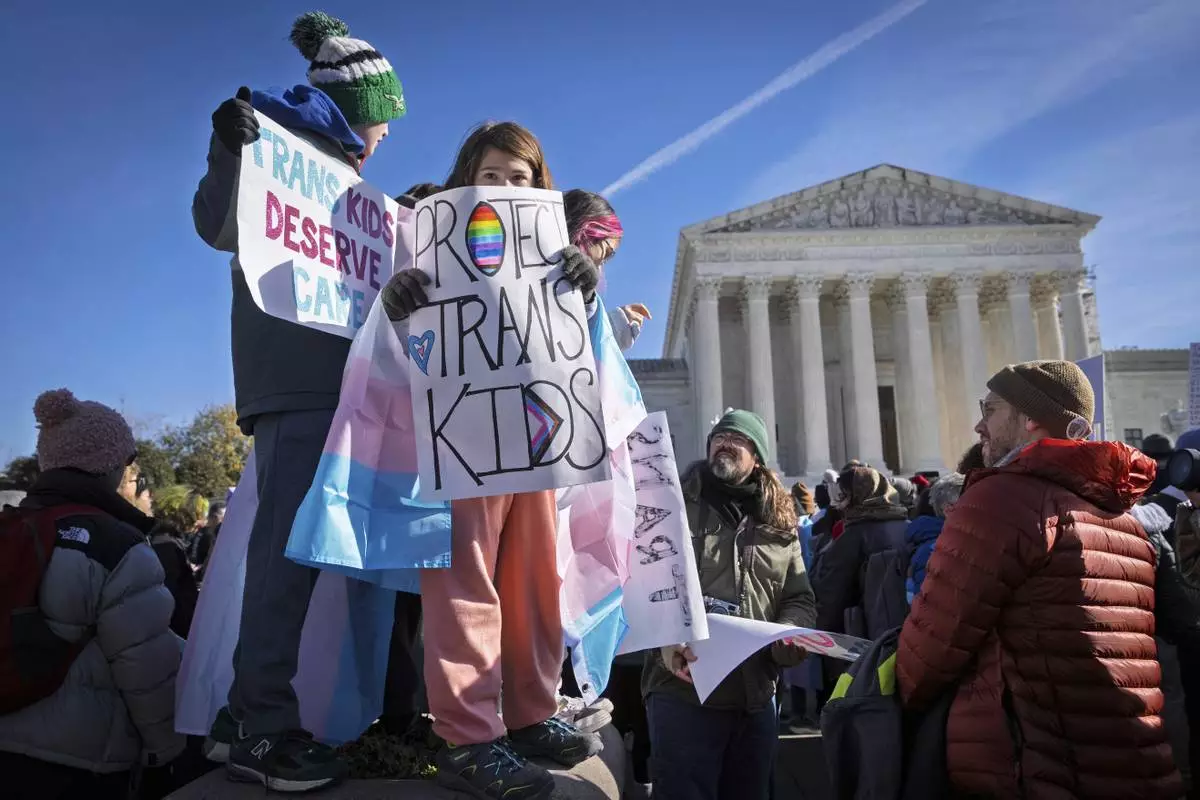
FILE - Children hold signs and transgender pride flags as supporters of transgender rights rally by the Supreme Court, Dec. 4, 2024, in Washington. (AP Photo/Jacquelyn Martin, File)
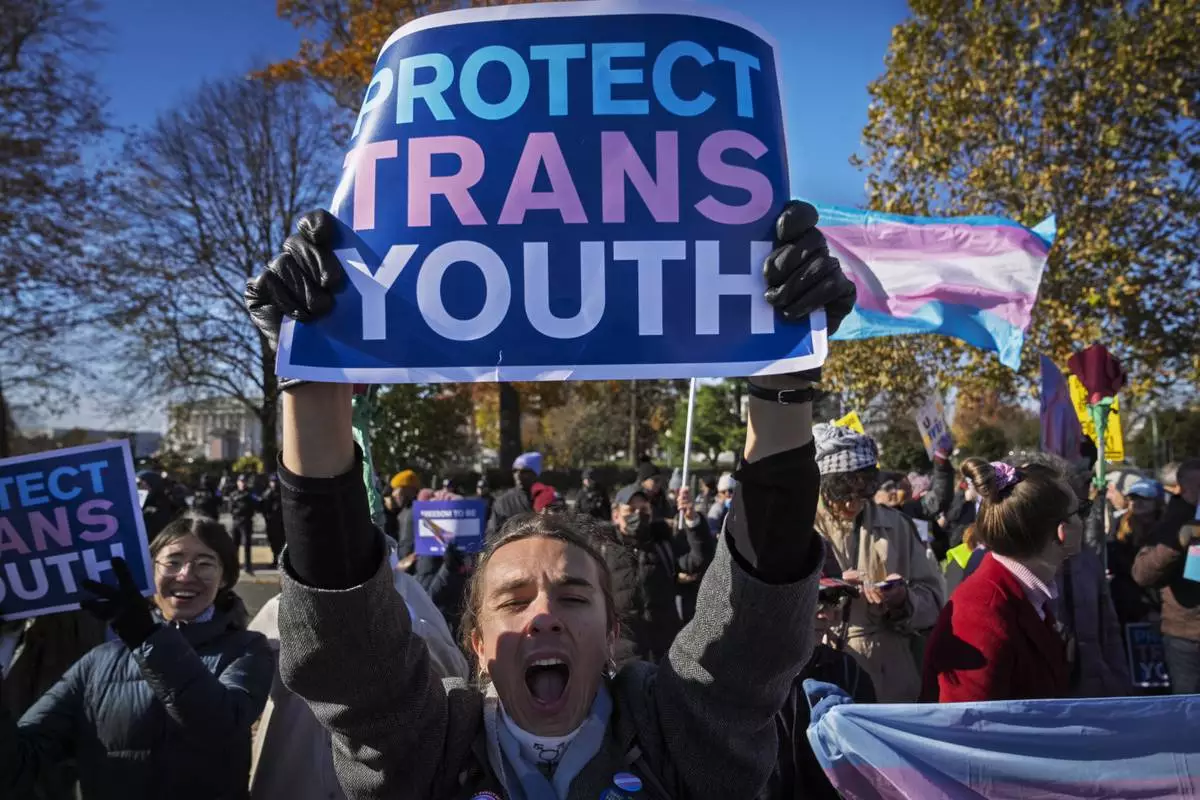
File - Supporters of transgender rights rally by the Supreme Court, Dec. 4, 2024, in Washington. (AP Photo/Jacquelyn Martin, File)
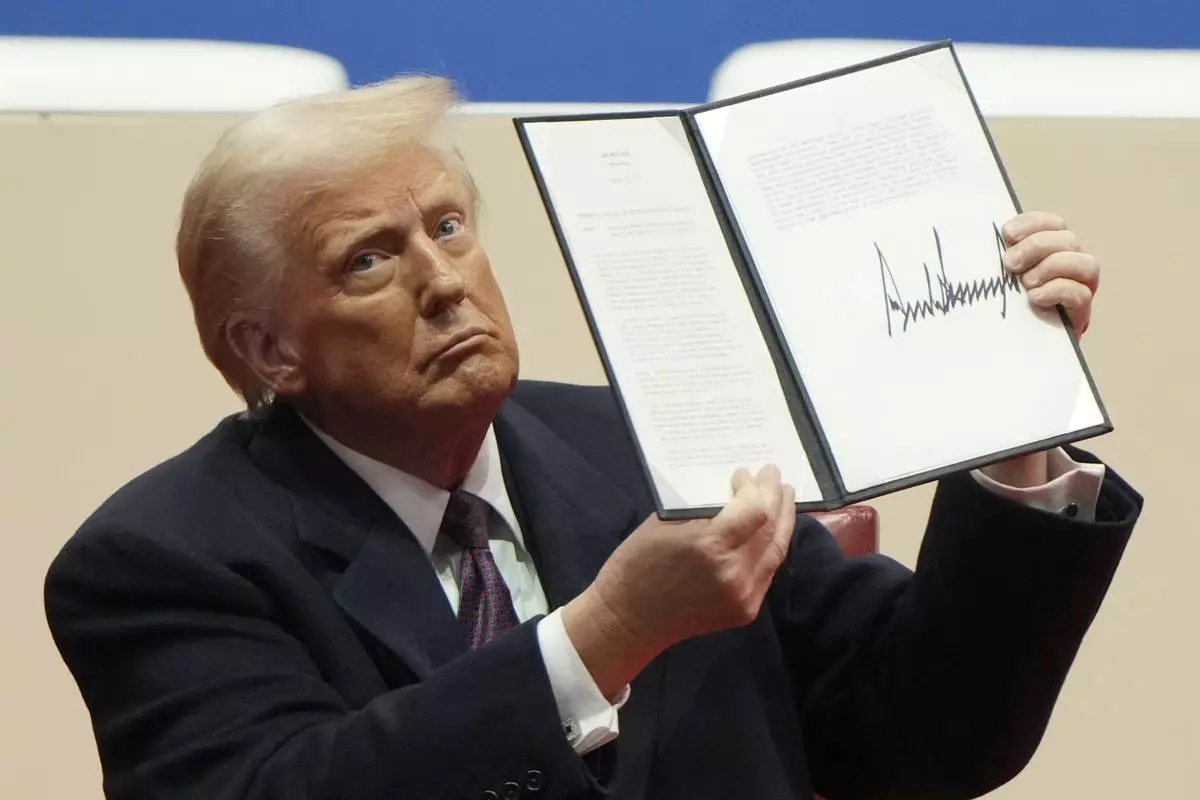
FILE - President Donald Trump holds up an executive order after signing it at an indoor Presidential Inauguration parade event in Washington, Jan. 20, 2025. (AP Photo/Matt Rourke, File)






